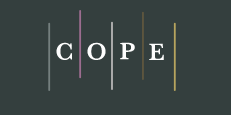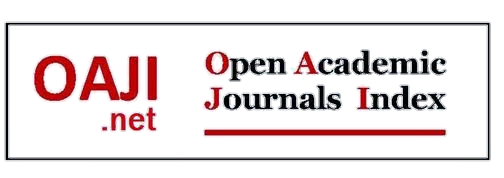Feasibility of Developing a Sharia-Compliant Creative Economy Model in Indonesia
1Ayus Ahmad Yusuf, 2Achmad,3Asmiyati Khusnul Maryam,4Dinan Fathi Shiddieqy
1,2,3 UIN Siber Syekh Nurjati Cirebon, Indonesia
4Universitas Sebelas Maret, Indonesia
https://doi.org/10.47191/jefms/v8-i2-12
ABSTRACT:
This study aimed to assess the feasibility, sensitivity, and characteristics of creative economy businesses in the Cirebon area of West Java. A quantitative approach with a descriptive method was used, collecting primary data through questionnaires and secondary data from MSME statistics and the Cirebon area profile. Purposive sampling was applied, selecting businesses based on certain criteria: (1) regional expertise, (2) large market potential, (3) growth potential, and (4) local government support. The findings show that the potential for creative products in the region is high. Technologically, raw materials, production materials, and necessary infrastructure are readily available, and local producers have the experience and skills required. From a financial perspective, significant investment capital is needed initially, but working capital requirements are relatively small. Socio-economically, creative economic activities have a positive impact, potentially increasing regional income through taxes and other business-related fees. Bank financing is mostly from conventional banks, with limited support from Islamic banks. However, Islamic financing options like mudharabah, musyarakah, murabahah, ijarah, and ijarah muntahiya bit tamlik could be developed for creative economic ventures.
KEYWORDS:
Creative Economy; Maqashid Sharia; Islamic Financing Model
REFERENCES:
1) Busari, S., Suleiman, H., & Salhab, B. (2024). Application of Guarantee contracts in Islamic Financial Transaction: Analysis of BNM and AAIOFI. Journal of Fatwa Management and Research, 29(3), 46–62. https://doi.org/10.33102/jfatwa.vol29no3.585
2) Dai, H., Li, N., Wang, Y., & Zhao, X. (2022). The Analysis of Three Main Investment Criteria: NPV IRR and Payback Period: 2022 7th International Conference on Financial Innovation and Economic Development (ICFIED 2022), Zhuhai, China. https://doi.org/10.2991/aebmr.k.220307.028
3) Evanita, S., & Fahmi, Z. (2023). Analysis of Challenges and Opportunities for Micro, Small, and Medium Enterprises (MSMEs) in the Digital Era in a Systematic Literature Review. JMK (Jurnal Manajemen Dan Kewirausahaan), 8(3), 227. https://doi.org/10.32503/jmk.v8i3.4190
4) Fernandez-Pol, J. E., & Harvie, C. (2020). What a Creative Economy Is and How It Works. In J. E. Fernandez-Pol & C. Harvie, Understanding the Creative Economy and the Future of Employment (pp. 27–48). Springer Singapore. https://doi.org/10.1007/978-981-15-1652-8_2
5) Haute, E. V. (2021). Sampling Techniques: Sample Types and Sample Size. In E. V. Haute, Research Methods in the Social Sciences: An A-Z of key concepts (pp. 247–251). Oxford University Press. https://doi.org/10.1093/hepl/9780198850298.003.0057
6) Hidayah, K., Daud, D., Zainal, N., & Ibrahim, S. S. (2021). Effectiveness of Musharakah Financing in Empowering Small Micro Enterprises. Studies of Applied Economics, 39(10). https://doi.org/10.25115/eea.v39i10.5847
7) Ishak, M. S. I. (2019). The principle of maṣlaḥah and its application in Islamic banking operations in Malaysia. ISRA International Journal of Islamic Finance, 11(1), 137–146. https://doi.org/10.1108/IJIF-01-2018-0017
8) Kamble, D. Y. (2022). Role of Banking in Economic Development. International Journal of Research and Analytical Reviews (IJRAR), 9(1).
9) Lin, J. (2023). A Comparative Study on the Application of NPV and IRR in Financial Market Investment Decision. Academic Journal of Business & Management, 5(4). https://doi.org/10.25236/AJBM.2023.050409
10) Ranjan, R. (2021). Financial Feasibility. https://doi.org/10.13140/RG.2.2.28798.10560
11) Sabiu, T. T., & Abduh, M. (2021). IMPACT OF ISLAMIC BANKING INCLUSION ON SME EMPLOYMENT GROWTH IN NIGERIA. Journal of Islamic Monetary Economics and Finance, 7(1). https://doi.org/10.21098/jimf.v7i1.1354
12) Sidel, J. L., Bleibaum, R. N., & Tao, K. W. C. (2018). Quantitative Descriptive Analysis. In S. E. Kemp, J. Hort, & T. Hollowood (Eds.), Descriptive Analysis in Sensory Evaluation (1st ed., pp. 287–318). Wiley. https://doi.org/10.1002/9781118991657.ch8
13) Supriani, E., Kartika, M., & Bariyah, N. (2024). The Role of Islamic Bank Financing in Increasing the Productivity of MSMEs in Indonesia. East African Scholars Journal of Economics, Business and Management, 7(08), 342–350. https://doi.org/10.36349/easjebm.2024.v07i08.005
14) Sutikno, S., Suhaemi, M., & Irsad Ariffin, M. (2022). Sharia Bank Credit Management In Entrepreneurship. Jurnal Keuangan Dan Perbankan (KEBAN), 2(1), 1–6. https://doi.org/10.30656/jkk.v2i1.5829
15) Tubastuvi, N., & Rusydiana, Aam Slamet. (2024). Prioritizing Islamic Financial Literacy for MSMEs in Indonesia. Islamic Economics Methodology, 3(1).
16) Ullah, K., Jan, S., & Shah, W. H. (2018). Murabahah Financing for a Small Medium Enterprise (SME). JISR Management and Social Sciences & Economics, 16(1), 143–148. https://doi.org/10.31384/jisrmsse/2018.16.1.9
















